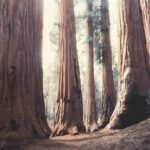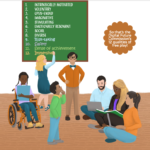At times, I’ve practiced what I have come to call News Outs. This is not one of those times. I am closely monitoring the state of the world, the US, my state of California, and the San Francisco Bay Area—my base camp. I’ve identified the best sources of information on the status of COVID-19 in my local community, and I regularly share information I read with family and friends. And almost daily, I discuss what’s happening on the national political stage with one or two of my closest friends. Because they pay attention to different media channels than I do, I broaden my view when I speak with them. And I create a space to think and talk about the larger, deeper issues driving our current challenges.
I am going to make a few suggestions today about engaging with news media during the coming month and year end. Here we go…
If you have very young children, attend to the “news” at times when they are engaged, or asleep, especially if you tend to watch or listen to programs. Young children lack the filtering capacities we’ve developed. Spare them the raw chaos of the media machine. If your children are older than 10, talk about what you’re reading that day, where you’re reading, watching, or listening, and what you are taking in. What is one news item that really struck you? How did it strike you? What are you heartened by? What concerns you? Work these questions into your conversations about the world and your local community with the young people in your life, whether you are a parent, a grandparent, or educator.
Notice your developing media habits. Our media habits change in response to what is happening around us. We can also change them consciously if we notice those habits. Here is an experiment to try. Choose one of these newsletters, subscribe, and read for the month of December. Take time to reflect on what you read even if you only write a few notes for five minutes. The first two links are newsletters about the news.
Nieman Lab—Nieman Journalism Lab, Harvard University. You can subscribe in upper right corner of website.
Columbia Journalism Review—Published by the Columbia University Graduate School of Journalism. You can select The Media Today, a daily newsletter, and Top Stories, a weekly digest. (If you prefer listening, they have a weekly podcast, The Kicker, available on Apple Podcasts, Stitcher, and SoundCloud. Subscribe on the right side of the website.
Yale Climate Connections—Published by Yale School of the Environment. You can subscribe in the upper right corner. They offer many audio options on the website. This is from their About page: Yale Climate Connections provides content developed by a network of experienced independent freelance science journalists, researchers, and educators across the country. In doing so, it brings together a dynamic global community of individuals, scientists, educators, and media and communicators in their common pursuit of better understanding and of responsibly addressing climate-related risks.

Brilliance at Night: The Americas in Darkness. This image of North and South America at night is a composite assembled from data acquired by the Suomi NPP satellite in April and October 2012. The new data was mapped over existing Blue Marble imagery of Earth to provide a realistic view of the planet. This image’s striking nighttime view was made possible by Suomi’s “day-night band” of the Visible Infrared Imaging Radiometer Suite. VIIRS detects light in a range of wavelengths from green to near-infrared and uses filtering techniques to observe dim signals such as city lights, gas flares, auroras, wildfires and reflected moonlight. In this case, auroras, fires and other stray light have been removed to emphasize the city lights. Image credit: Nasa
Take good care. Keep your spirits up. Connect.


